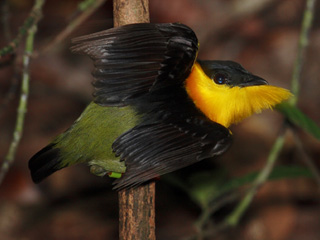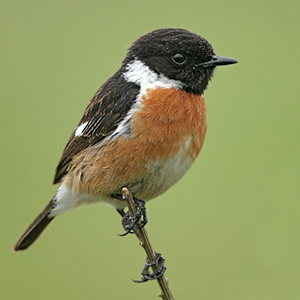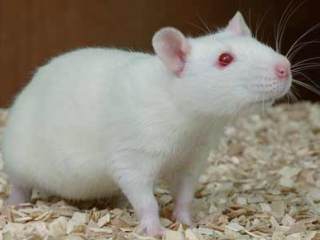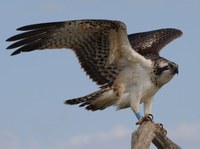LF Projects
| Evolutionary neurobiology of courtship displays | Physiological adaptations and decision-making during migration | Hormonal control of territorial behaviour |
|---|---|---|
|
|
||
|
How did sexual selection lead to the evolution of elaborate courtship displays? And how do females select their mates on the basis of these displays? Male courtship and female choice are the two key factors determining reproductive success – no copulation, no offspring. We are studying the proximate and ultimate causes of courtship displays in the field and in the laboratory. |
Many migratory species adopt a stop-and-go strategy: long distance flights are alternated to stopovers, during which birds rest and refuel. We are studying how hormones and food regulate stopover duration in response to physiological conditions. Our aim is to understand how stopover decisions are made, i.e. how bird know when to stay and when to go. |
Birds defend territories from intruders to protect resources such as food or mates. Territorial behaviour can be particularly intense during breeding, when males have elevated levels of testosterone. Our research focuses on species that defend their territories outside the breeding season, when the relationships between hormones and territoriality are less clear. |
| Effects of (xeno)estrogen on development of brain and behaviour | Conservation and connectivity of endangered bird species | Influence of date of arrival to breeding sites on song and reproductive success |
|---|---|---|
|
|
|
|
|
During development, estrogen hormones organize the sexual differentiation of brain and behaviour. Xenoestrogens are compounds that mimics the action of estrogen. We are studying how environmental exposure to xenoestrogen during development can permanently alter brain and behavioural differentiatiion in mammalian and bird species. |
Dispersal is one of the factors that drive the dynamics and the demographic trends of populations. The osprey Pandion haliaetus is a raptor with unique morphological and behavioural specializations for catching live fish. Our research on the spatial ecology of this raptor focuses on dispersal strategies and movements in the Mediterranean area. |
Arriving early at the breeding sites may gurantee the best territories and the best mates, which in turn may increase the reproductive success. We are starting a project aimed to study how the arrival date affects song development and territory size, which might be used by females for choosing their mates. |







